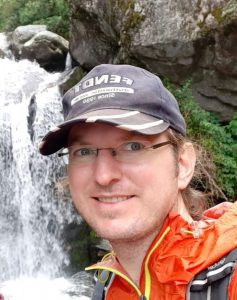Research Statement
Being trained in geomorphology and geochronology, my main interest lies in understanding and quantifying landscape changes throughout the ice age period, i.e. the Quaternary. Unravelling geomorphodynamics in response to changing climatic conditions is essential to assess natural hazards and sustain a habitable Earth surface that provides us with all vital resources. Following the approach of quantitative geomorphology, I develop and apply luminescence dating techniques to sedimentary deposits which preserve valuable information on past climatic and environmental conditions. The measured rates of deposition can, therefore, be related to climatically-induced or human-induced changes of geomorphic process rates. To explore human-environment relationships and date ancient settlements, I have lead and been actively involved in geoarchaeological investigations of Mousterian, Aurignacian, Gravettien and historic sites in various regions across Eurasia and northern Africa.
In addition to exogenic landscape dynamics, I am interested in constraining the timing of endogenic processes using luminescence techniques. For instance, I have been successful in determining the ages of Late Pleistocene scoria cone and phreatomagmatic eruptions in Central Europe and Central Africa. As a novel application of trapped charge dating methods, I started looking into the potential of specific luminescence signal for reconstructing the cooling and thus exhumation history of rocks in mountain ranges.
Short Biography
I completed my studies as a physics and geography teacher at the University of Bayreuth in 2008. My PhD research was based at the University of Cologne within the interdisciplinary Collaborative Research Centre (CRC) “Our Way to Europe”. In this project, I established chronologies of archaeological sites and related environmental archives in south-eastern Europe, the Middle East and north-eastern Africa by developing and applying luminescence dating methods to heated flint artefacts and sediments. Following the completion of my PhD in 2012, I took a Post-doctoral position (equivalent to an assistant professorship) at the University of Bayreuth, including the direction of the luminescence laboratory. Between 2017 and 2018 I spent six months at the Université Bordeaux Montaigne as Professeur Invité and as a DAAD scholarship holder to pursue fundamental research into luminescence processes. I completed my habilitation and obtained the venia legendi in physical geography in 2019. As of April 2020, I joined the Institute of Earth Surface Dynamics at the University of Lausanne as a Senior Scientist.
Publications
Full publication list is available here.
Contact
Christoph Schmidt
University of Lausanne
Institute of Earth Surface Dynamics
Géopolis – Bureau 4414
1015 Lausanne, Switzerland
christoph.schmidt@unil.ch
